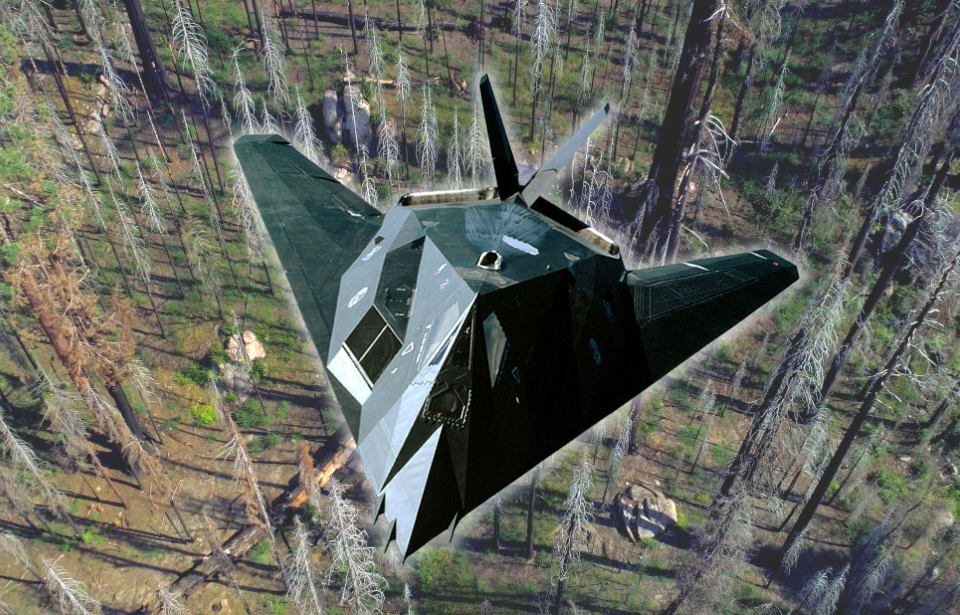Mysterious crash in Sequoia National Forest
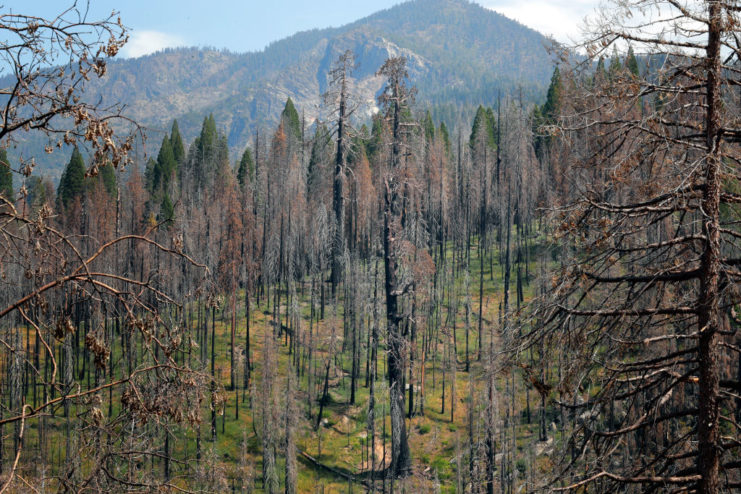
On July 11, 1986, the US Air Force conducted a test flight of the highly classified F-117 Nighthawk. Around 2:00 AM, while on a flight over Sequoia National Forest, California, the aircraft crashed, claiming the life of the pilot and sparking a 150-acre brush fire. Firefighters from Kern County and the US Forest Service worked tirelessly to contain the blaze.
In the aftermath, the Air Force swiftly cordoned off the area, declaring it restricted airspace. This precautionary measure aimed to deter any unauthorized individuals from accessing the crash site and potentially obtaining information about the newly developed aircraft.
In a statement at the time, the Kern County Sheriff’s Office told the public, “The whole area has been restricted, including the air space above the crash site. There will be military aircraft in the area, and anyone entering the area will be dealt with appropriately by the Air Force.”
A statement from the Air Force was even more vague, only revealing that a US military aircraft had crashed in Sequoia National Forest and that a board of officers was investigating the incident. “That’s the guidance we’ve been given from Washington,” said Staff Sgt. Lorri Wray. “We can’t give out any details.”
When asked, a Pentagon spokesperson said the crashed aircraft was “not a bomber.”
Replacing the F-117 Nighthawk with an F-101A Voodoo
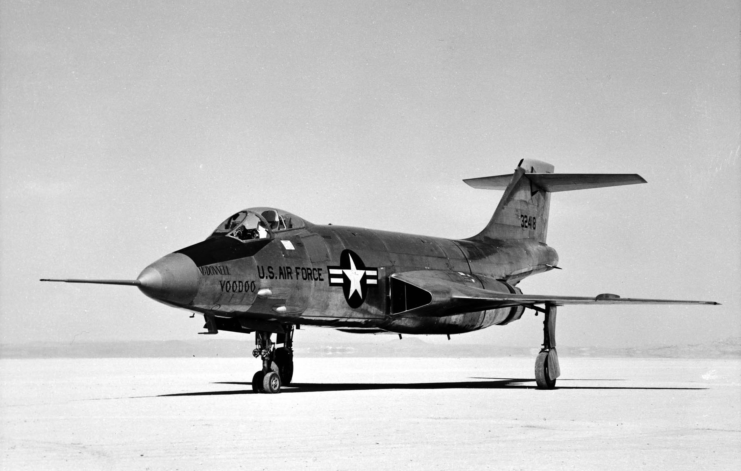
US Air Force personnel moved to recover the debris from the downed F-117 Nighthawk. Later, the aircraft was substituted with a crashed F-101A Voodoo sourced from Area 51 in Nevada. The F-101A had been out of service by the Air Force since 1972 and by the Air National Guard since 1982.
The crash quickly drew public interest, with many speculating that the aircraft originated from Edwards Air Force Base, California, about 65 miles from the crash site. This suspicion was fueled by the base’s reputation for testing innovative and advanced aircraft, including prototypes, bombers, and modified conventional aircraft. Examples include the Northrop F-20 Tigershark and the Rockwell B-1 Lancer.
Sources incorrectly reveal the aircraft was an F-19
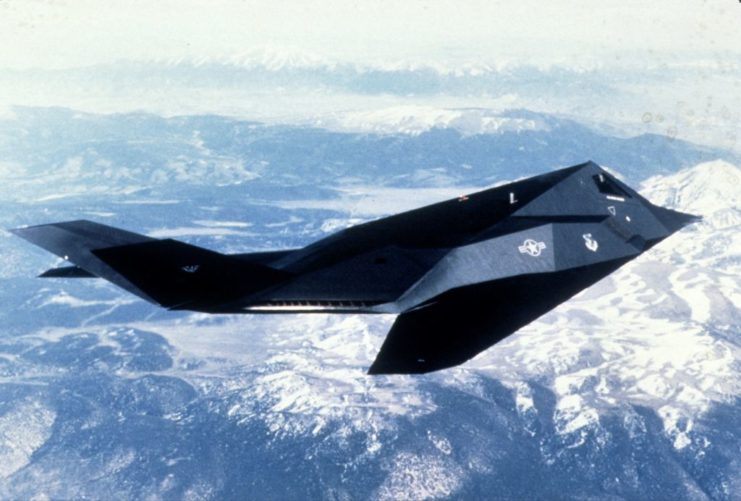
An article published by the Associated Press on the day of the crash featured International Arms Combat editor Andy Lightbody, who revealed that undisclosed sources had informed him that the aircraft in question was an F-19. The mostly speculative aircraft was never officially confirmed by the US Air Force and has long held a legendary status among military aviation enthusiasts.
The concept of a classified stealth aircraft bearing the designation “F-19” emerged following the announcement of the F-20. Since its predecessor was the McDonnell Douglas F/A-18 Hornet, many anticipated that the next fighter would logically be assigned the subsequent number in the sequence. When this didn’t occur, it sparked conjecture about a covert military project.
The Air Force promptly refuted these speculations, explaining that the discrepancy arose from Northrop’s specific request for the Tigershark to be designated the F-20. Nonetheless, there are still some who believe that the F-19 may have been in development, possibly entrusted to Lockheed for production.
Unveiling the F-117 Nighthawk
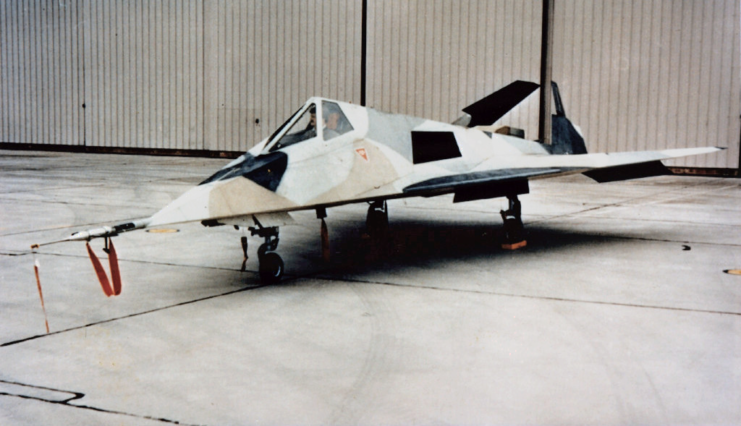
The inception of the Lockheed F-117 Nighthawk dates back to the 1970s, prompted by a Defense Advanced Research Projects Agency (DARPA) study that highlighted the unexpected vulnerability of manned aircraft operated by the United States. This revelation led DARPA to organize a competition for a new stealth fighter design, won by Lockheed Martin’s Skunk Works.
Following the awarding of the contract, the F-117 conducted its first test flight in 1981, with deliveries to the US Air Force taking place the subsequent year. Despite achieving operational status just two years later, the stealth fighter remained shrouded in secrecy. The military only disclosed its development to the public in 1988, and it wasn’t until two years later that civilians were granted their first glimpse of the aircraft.
A total of 64 F-117s were built during its service life, including five prototypes. The aircraft played a role in the Gulf War and the Yugoslav Wars, with one being downed by a surface-to-air missile (SAM) during the latter conflict. The F-117 was officially retired in 2008, making way for the Lockheed Martin F-22 Raptor.
Despite its retirement, a fleet of F-117s is meticulously maintained in airworthy condition.
F-117 Nighthawk specs
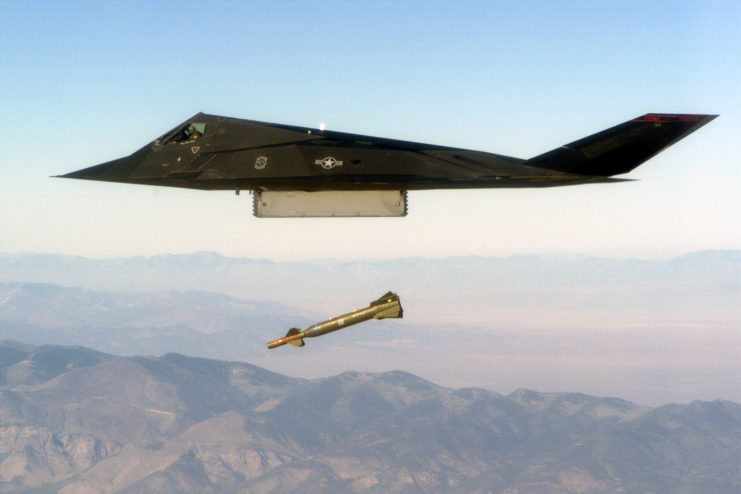
The F-117 Nighthawk was meticulously crafted to evade radar detection, featuring angled panels coated with radar-absorbing material, rendering it virtually invisible on radar screens. Propelled by two General Electric F404-F1D2 turbofan engines, it boasted a top speed of Mach 0.92 and a range of 1,070 miles.
The stealth aircraft featured two internal weapons bays and each accommodated a hardpoint, allowing for a variety of munitions, including the B61 nuclear bomb, the GBU-31 JDAM INS/GPS guided munition and several laser-guided bombs, such as the GBU-10 Paveway II, GBU-27 Paveway III and GBU-12 Paveway II, each with distinct warheads.
Additional notable features included a distinct V-tail design, air refueling capabilities and quadruple-redundant fly-by-wire flight controls, which were adapted from those used by the General Dynamics F-16 Fighting Falcon, F/A-18 Hornet, F-15E Strike Eagle, and the Boeing B-52 Stratofortress.
More from us: The Mikoyan-Gurevich MiG-25 Scared the West – Until a Defector Exposed Its Secrets
Primarily operated by the US Air Force, the F-117 was assigned to the 412th Test Wing at Edwards Air Force Base; the 4450th Tactical Group and 37th Tactical Fighter Wing at the Tonopah Test Range, Nevada; and the 49th Fighter Wing at Holloman Air Force Base, New Mexico.
